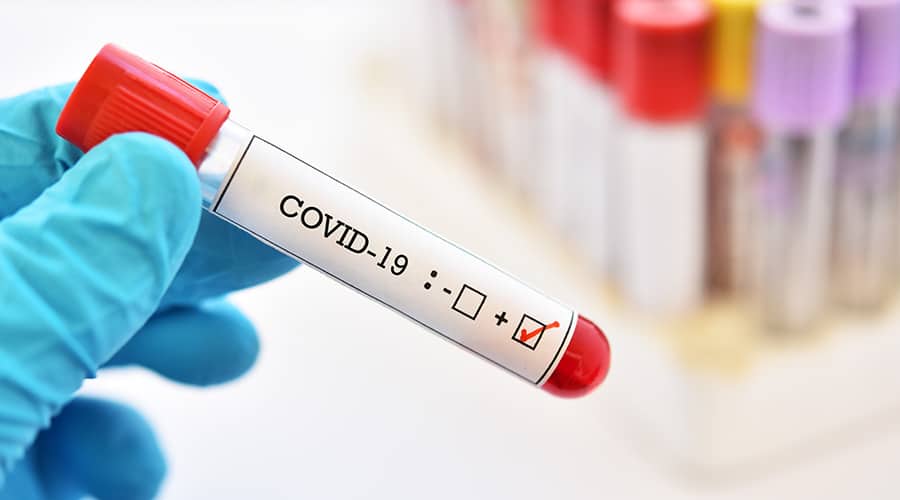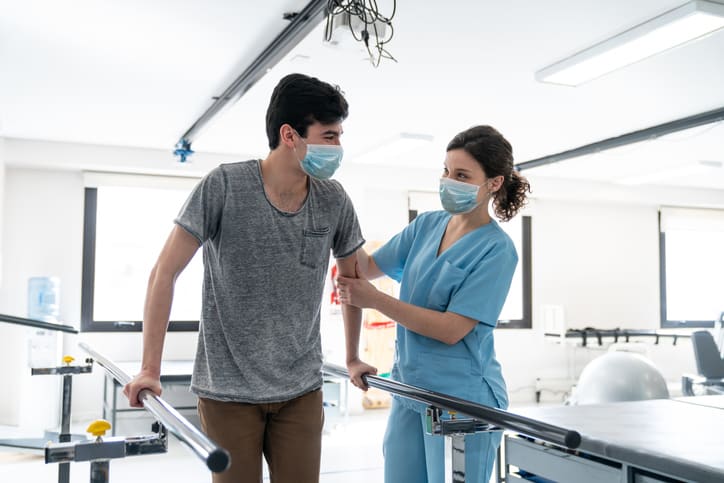
Your coronavirus update for Sept. 9; stay up to date with Elite
More than 27 million cases of coronavirus (COVID-19) have been diagnosed worldwide as of Monday evening, including at least 890,000 deaths. Healthcare officials in the United States have reported more than 6.4 million positive COVID-19 cases and at least 192,000 deaths. Source: Johns Hopkins University & Medicine
COVID Causing More Young Adults To Live With Their Parents
Millions of Americans have decided to move in with family members as a result of the coronavirus pandemic, according to a recent report by the Pew Research Center. The share of 18-29-year-olds who live with their parents has surpassed the previous peak that occurred during the Great Depression era, the report claims.1 The data from Pew Research Center came from an analysis of monthly Census Bureau data.
In July, 52% of young adults resided with one or both parents, up from 47% in February. The number and share of young adults living with their parents also grew across the board for all major racial and ethnic groups, men and women, and metropolitan and rural residents, as well as in all four main census regions, according to the research. Growth was sharpest for youngest ages 18 to 24 and for White young adults.
A Pew Research Center survey shows that young adults have been particularly affected by the pandemic and economic downturn, and have been more likely to move than other age groups. About 9% of young say they relocated temporarily or permanently due to the coronavirus outbreak, and about 10% had somebody move into their household the report claims. Among all adults who moved due to the pandemic, 23% said the most important reason was because their college campus had closed, and 18% said it was due to job loss or other financial reasons.
Whites accounted for about 68% of the increase in young adults living with their parents. As of July, more than half of Hispanic (58%) and Black (55%) young reported to be now living with their parents, compared with about half of White (49%) and Asian (51%) young adults, researchers noted.
Other findings include that young men are more likely than young women to live with their parents, and both groups experienced increases in the number and share residing with one or both parents since the beginning of the coronavirus outbreak. A higher share of young adults in metropolitan areas live with their parents compared to rural young adults.
Growth in the United States is said to be sharpest in the South, where the total has risen by more than 1 million and the share increased by six percentage points, from 46% to 52%. However, the Northeast remains the region where the highest share of young adults live with parents (57%).
AstraZeneca Vaccine Trial Enters Phase III
Officials with AstraZeneca, a global biopharmaceutical company based in Cambridge, UK, that develops prescription medicines primarily for the treatment of diseases in oncology, cardiovascular, renal and metabolism, and respiratory and immunology, have announced that development of the company’s COVID-19 vaccine has expanded into a Phase III clinical trial across all adult age groups in the United States.
The trial, funded by the Biomedical Advanced Development Authority, a component of the office of the Assistant Secretary for Preparedness and Response at the U.S. Department of Health and Human Services and the National Institute of Allergy and Infectious Diseases, is reportedly recruiting up to 30,000 adults from diverse racial, ethnic, and geographic groups who are healthy or have stable underlying medical conditions. Additionally, centers located outside the U.S. are included based on predicted transmission rates of the virus and sites in Peru and Chile are planned to initiate recruitment soon, officials said.
Trial participants are being randomized to receive two doses of the vaccine or a saline control four weeks apart, with twice as many participants receiving the potential vaccine than the saline control. The trial is assessing efficacy and safety of the vaccine in all participants, and local and systemic reactions and immune responses will be assessed in 3,000 participants. Clinical development of the vaccine is progressing globally with late-stage clinical trials ongoing in the UK, Brazil, and South Africa, officials said. Trials are planned to begin in Japan and Russia. These trials, together with the U.S. Phase III clinical trial, will enroll as many as 50,000 participants globally, officials said. Results from the late-stage trials are anticipated later this year, depending on the rate of infection within the clinical trial communities.
Interim results from the ongoing Phase I/II trial in July reportedly showed the vaccine was tolerated and generated robust immune responses against the virus in all evaluated participants.
The vaccine, co-invented by the University of Oxford and its spinout company Vaccitech, utilizes a replication-deficient chimpanzee viral vector based on a weakened version of a common cold virus that causes infections in chimpanzees and contains the genetic material of the virus spike protein, officials said. After vaccination, the surface spike protein is produced, priming the immune system to attack the virus if it later infects the body.
CDC Could Seek November Vaccine Distribution
A report by NBC News claims the Centers for Disease Control and Prevention (CDC) has informed state governors that a large-scale distribution of a coronavirus vaccine should be anticipated by Nov. 1.
According to the report,2 a letter from CDC director Dr. Robert Redfield dated Aug. 27 says the CDC had contracted with pharmaceutical company McKesson Corp. to potentially distribute hundreds of millions of vaccine doses to health departments and medical facilities across the country this fall.
Governors are reportedly being asked to help with expediting applications for distribution facilities that will be set up and operated by McKesson. However, the report notes that it remains highly uncertain whether a vaccine will be ready by Nov. 1 or which manufacturer will produce it.
A dental practice located in Narberth, PA, a suburb of Philadelphia, is being credited with inventing a tool that makes it possible for dentists to perform routine care while protecting themselves, staff, and patients from potential COVID-19 exposure. According to a report by Philadelphia Magazine, the instrument, a product of MB Dental Solutions, prevents the droplets and spray from spreading throughout the office during dental procedures.
The PatientsShield3 consists of a flexible polycarbonate shield, thin polyethylene sheets, and a suction funnel that prevents spray and splatter from entering the air without obscuring the view for the dentist, according to the report.4
References
- Fry R, Passel J, Cohn D. A majority of young adults in the U.S. live with their parents for the first time since the Great Depression. Pew Research Center. 2020. Accessed online: www.pewresearch.org/fact-tank/2020/09/04/a-majority-of-young-adults-in-the-u-s-live-with-their-parents-for-the-first-time-since-the-great-depression
- Stelloh T, Tirrell M, Ruggiero R. CDC tells states to prepare for distribution of COVID-19 vaccine by Nov. 1. CNBC. Accessed online: https://news.yahoo.com/cdc-tells-states-prepare-distribution-231945460.html
- PatientsShield. MB Dental Solutions. 2020. Accessed online: https://patientsshield.com
- Dickerson, B. Narberth dentist invents tool to protect patients from potential COIVD-19 exposure. 2020. MontcoToday. Accessed online: https://montco.today/2020/09/narberth-dentist-invents-tool-to-protect-patients-from-potential-coivd-19-exposure-during-routine-care






